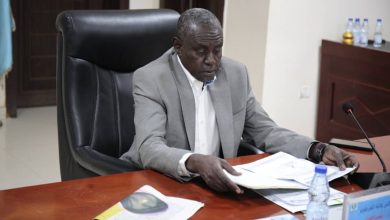Ethiopia’s Hidden Famine Needs National and Global Attention

Le Monde / Africa
That human beings should die massively of hunger in 2024 is scandalous. But that famine should be tolerated, or even used as a political weapon by a government, leaves one speechless. Ethiopia’s recent history includes at least two such episodes: in 1973-1974 (between 50,000 and 200,000 deaths), when the tragedy precipitated the fall of Emperor Haile Selassie, and in 1983-1984 (between 300,000 and 1 million deaths according to estimates). The terrible situation prevailing today in the northern Tigray region, where local authorities have declared a state of famine − a situation not recognized by Ethiopian Prime Minister Abiy Ahmed − can only evoke these sinister precedents.
The atrociously murderous − 600,000 dead, according to the African Union − and destructive war that pitted the Ethiopian federal army against the insurgents of the Tigray People’s Liberation Front between 2020 and 2022 may have ended militarily in favor of the Ethiopian troops. Drought and then the destructive rains that followed the armed conflict condemned over 90% of Tigray’s 6 million inhabitants to malnutrition. Just as the United Nations was about to recognize the state of famine, the World Food Program suspended its food distributions between March and December 2023 due to a huge aid diversion scandal. In the meantime, famine has set in and the death toll is rising.
Ahmed’s government denies the situation. Acknowledging the famine would awaken the ghosts of the past and contradict the rhetoric that presents the country as the future grain supplier of Africa. But the authorities in Addis Ababa are accused of abandoning the Tigrayans to their fate in order to complete the region’s kneecapping. It has to be said that Abiy, hailed as a liberal reformer when he came to power in 2018, to the point of being awarded the Nobel Peace Prize the following year, has above all demonstrated his ability to fan the flames of the many conflicts that pit the ethnolinguistic communities of this diverse country against each other, in Tigray, but also in the Oromia and Amhara regions.
In this country of 120 million inhabitants with considerable economic and human potential, the only one in Africa never to have been colonized, Abiy the modernizer has turned into an autocrat. The messianic overtones of this convert to Pentecostalism can no longer hide the reality: the loss of control not only of the territory he claimed to unify but also of the economy, plagued by the black market. Nationalist and warmongering rhetoric, such as the demand for access to the Red Sea, is compounded by the repression of opponents and journalists.
The famine raging in Tigray, and Ahmed’s denial of it, is yet another symptom of a drift against which the international community should be mobilizing. In Ethiopia, as elsewhere, the repeating of historical tragedies is not inevitable. In this vast country, which needs to reconcile all its demographic groups, no lasting peace can be built by humiliating one part of the population, let alone by turning a blind eye to the flagrant humanitarian tragedy it is suffering.



